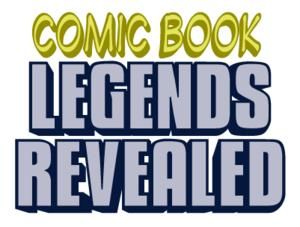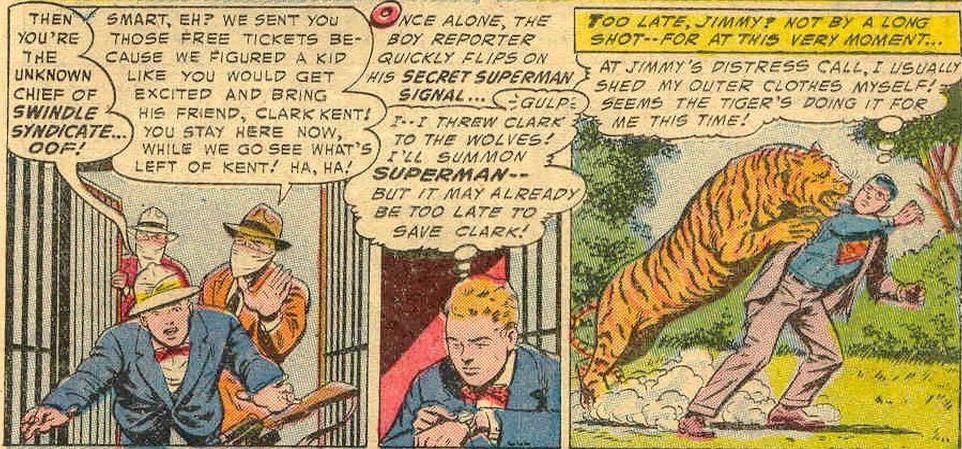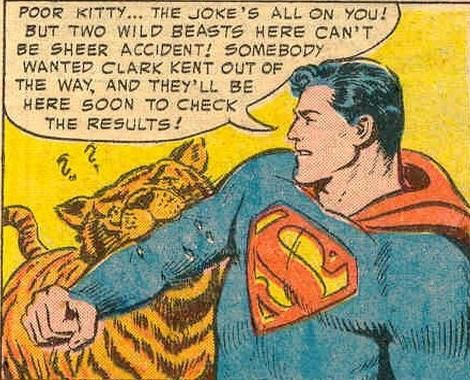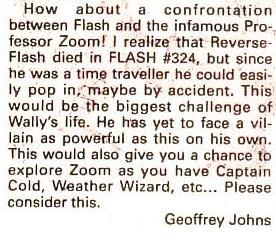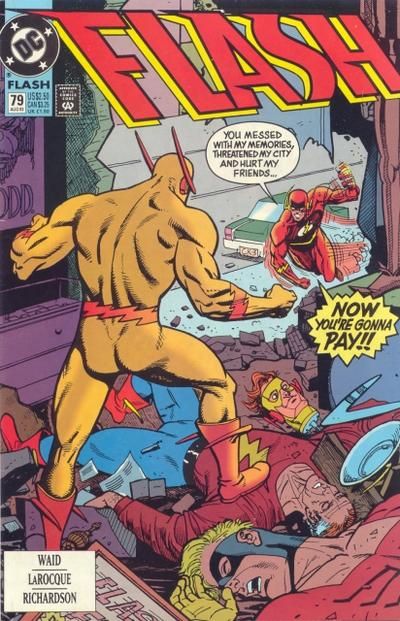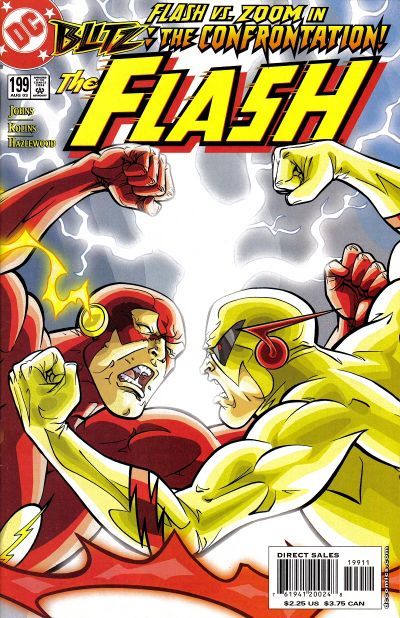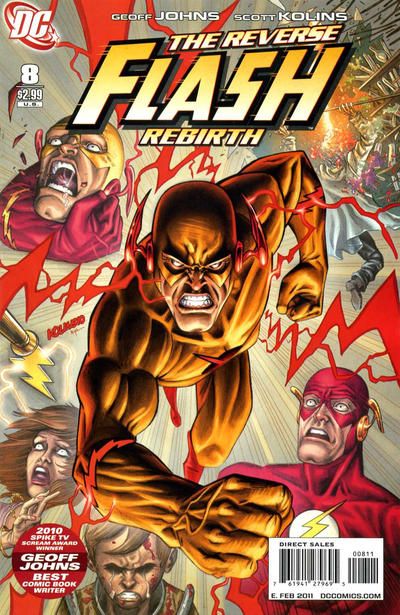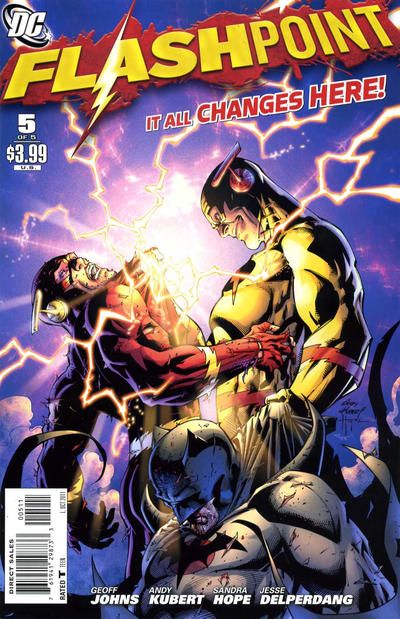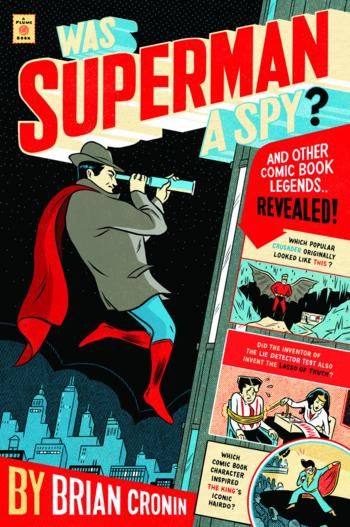Welcome to the three hundredth and thirty-second in a series of examinations of comic book legends and whether they are true or false. This week, discover whether Popeye's use of spinach actually led to an increase in the sales of the plant! In addition, marvel at a strange early Comics Code censoring of a Superman issue from the 1950s and see another example of Geoff Johns foreshadowing future comics through a letter written to DC Comics when he was a teen!
Click here for an archive of the previous three hundred and thirty-one.
Let's begin!
COMIC LEGEND: Elzie Segar's use of spinach in the Popeye comic strip led to a 33% increase in spinach in the United States.
STATUS: I'm Going With False
A few months back, I featured a legend about Popeye and his connection to spinach. There was a longstanding rumor about Popeye using spinach because Elzie Segar was following an urban legend that spinach contained an astonishingly high level of iron. As I revealed in that installment, this was not true, as demonstrated by Mike Sutton in a really impressive article on the subject.
Sutton did not stop there with the Popeye debunking, though! He also had another great article on the topic of whether Popeye actually caused a 33 percent increase in spinach consumption in the United States during the 1930s, a legend that is so accepted as true that Crystal City, Texas has a statue of Popeye dedicated to the character in honor of this legend (spinach being a major crop of Crystal City).
First off, spinach production DID go up during the 1930s. In examining the facts, though, it does not appear likely that it was Popeye that led to the increase in spinach consumption. Heck, spinach had already increased 125% in Texas in the five years before Popeye began eating the plant.
Not only that, but Texas spinach production had gone up 11 percent in 1931 already! And then 11 percent more in 1932 and then 43 percent in 1933!! All before Popeye hit the big screen in his popular animated film series. Meanwhile, in other states, spinach production was rising at even a faster rate in the late 1920s into the early 1930s, all before Popeye began eating the plant.
Moreover, later in the 1930s, when spinach production saw another boom (also attributed by legend to Popeye), Franklin Roosevelt's New Deal Soil Conservation and Domestic Allotment Act of 1936 was likely more responsible. These acts combined to encourage farmers to diversify their crops, and spinach was the major beneficiary of this diversification. So when Texas spinach production dropped 19 percent in 1934 and only raised 1 percent in 1935 before going up 33 percent in 1936, isn't it a lot more likely that it was the new act (which was signed in 1935 and enacted in 1936) and not that people were REALLY into Popeye and spinach in 1933 and then NOT AT ALL into Popeye and spinach in 1934 and 1935 and then REALLY into Popeye and spinach in 1936 again?
When you add in the fact that spinach had already gone up in great percentages BEFORE Popeye began eating the plant combined with the drops in 1934 and 1935 followed by the the government encouraging the production of the crop in 1936 and I don't think there is enough evidence to point to Popeye being the reason behind the plant's increased production. Heck, I think a strong case could be made for the fact that the increased popularity of the plant was the reason why Segar chose to use it, not the other way around, as, again, it was undergoing a boom in popularity in the years leading up to Segar having Popeye eat it.
That said, it certainly did not hurt sales of the crop to have Popeye so prominently eat the plant, and if Crystal City wants to credit the guy, then more power to them!
Here is Sutton's article on the topic.
COMIC LEGEND: The Comics Code made a bizarre change to a 1950s Superman story involving a tiger biting Superman.
STATUS: True
In the early days of the Comics Code, what was and what was not allowed tended to be fairly nebulous, but the Code was so powerful in those early days that the comic book companies basically had to do whatever they said.
1955's Superman #97 showed just how ridiculous things could get. Longtime DC editor George Kashdan discussed the situation with Jim Amash in an extended interview before Kashdan passed away in 2006. The results of the interview (on a number of different topics) appeared in Alter Ego #93 and 94.
In #93, Kashdan explains a Superman story where Superman is bitten by a lion, but the Comics Code returned the story, saying that it was too violent for Superman to be bitten by a lion. It is Superman! He is smiling in the story! But since the lion was shown biting down on Superman, the folks at the Code felt that it was too scary for children.
They pleaded with the Code, but that was the end of it - they would have to alter the story or not release it at all. So Kashdan had the artist, Curt Swan (or perhaps a DC staffer), edit the panel so that instead of the lion's teeth coming down on Superman's arm, the lion's teeth all pop off when it tries to bite Superman. The Code was somehow okay with this, and thus the story made it through!
Kashdan's memory is a BIT off, as the story in question from Superman #97 involved a TIGER not a lion, but the basic premise is there...
Pretty bizarre, huh?
Thanks to George Kashdan, Jim Amash and Alter Ego for this interesting piece of comic book history!
COMIC LEGEND: Geoff Johns had a letter in a 1991 issue of Flash that foreshadowed the usage of a particular character in both Mark Waid AND Johns' later run on Flash.
STATUS: True Enough.
Last year, I did an installment involving a really interesting letter than Geoff Johns wrote in to DC Comics' Superboy during the mid-1990s suggesting that Superboy's half-human DNA be revealed to be Lex Luthor. Obviously, that's exactly what Johns ended up doing when he later wrote the character in the pages of Teen Titans.
Well, reader David J. came across ANOTHER letter from Johns that, while not quite as interesting as the Superboy letter, is still fascinating.
Here, from 1991's Flash #48, is the particularly interesting part of Johns' letter...
Now, first off, it is interesting to note that that is basically what Mark Waid did with his usage of Professor Zoom in The Return of Barry Allen...
But more importantly, it is fascinating to note that Johns' appreciation of the Zoom character (and the usage of time travel with the character) existed there, long before the character (and those themes) later showed up in Johns' work with the character in a number of ways.
First off, Johns later introduced a new character named Zoom who used time travel to attack Wally...
And later, Johns prominently brought back Professor Zoom and had a number of notable stories involving Zoom and time travel, including the recent major storyline, Flashpoint.
It is awesome to see Johns get a chance to later writer the characters he was enthusiastic about in 1991, and it is really neat to be able to see the background of these things, even if here, unlike the Superboy one, it is more of a general "Hey, Professor Zoom is cool" thing than a specific plot point like "Lex Luthor should be one half of Superboy's DNA."
Neat stuff, David, thanks for the suggestion!
Okay, that's it for this week!
Thanks to the Grand Comics Database for this week's covers! And thanks to Brandon Hanvey for the Comic Book Legends Revealed logo!
Feel free (heck, I implore you!) to write in with your suggestions for future installments! My e-mail address is cronb01@aol.com. And my Twitter feed is http://twitter.com/brian_cronin, so you can ask me legends there, as well!
Follow Comics Should Be Good on Twitter and on Facebook (also, feel free to share Comic Book Legends Revealed on our Facebook page!). If we hit 3,000 likes on Facebook you'll get a bonus edition of Comic Book Legends the week after we hit 3,000 likes! So go like us on Facebook to get that extra Comic Book Legends Revealed! Not only will you get updates when new blog posts show up on both Twitter and Facebook, but you'll get original content from me, as well!
Also, be sure to check out my website, Legends Revealed, where I look into legends about the worlds of entertainment and sports, which you can find here, at legendsrevealed.com.
Here's my book of Comic Book Legends (130 legends - half of them are re-worked classic legends I've featured on the blog and half of them are legends never published on the blog!).
The cover is by artist Mickey Duzyj. He did a great job on it...(click to enlarge)...
If you'd like to order it, you can use the following code if you'd like to send me a bit of a referral fee...
Was Superman a Spy?: And Other Comic Book Legends Revealed
See you all next week!

